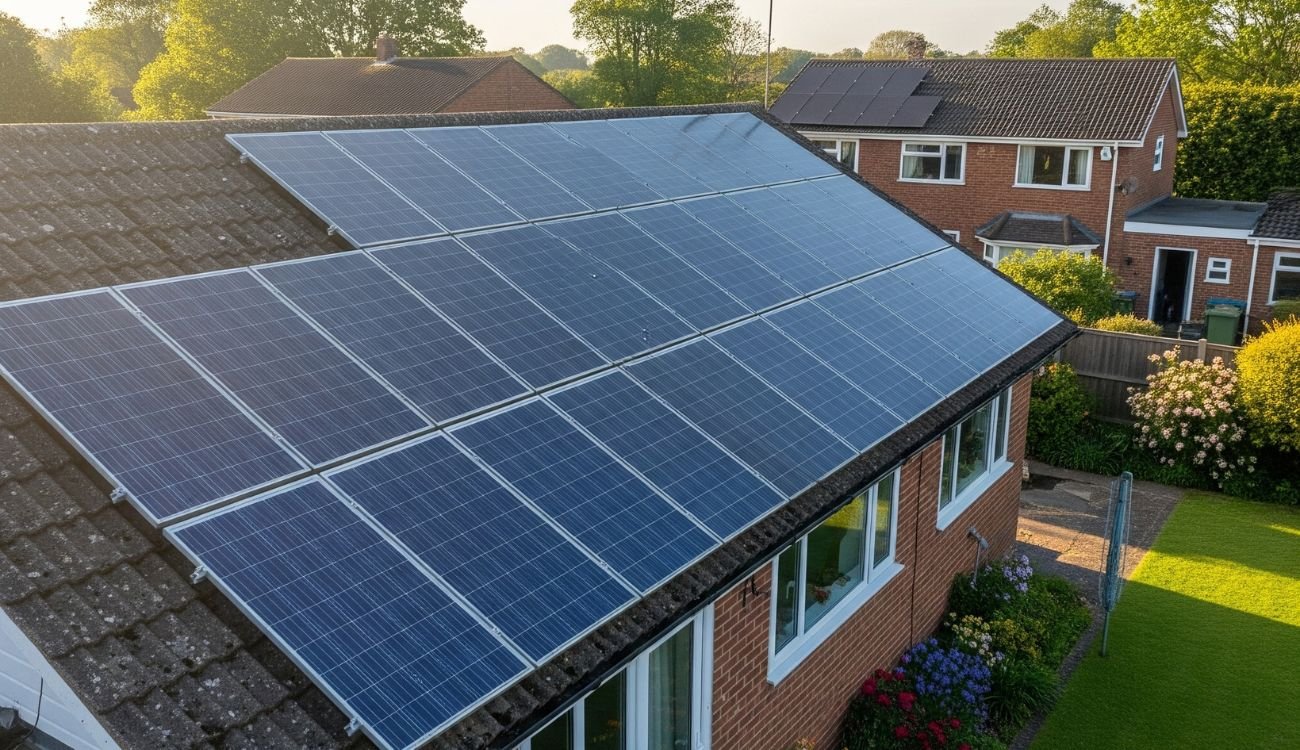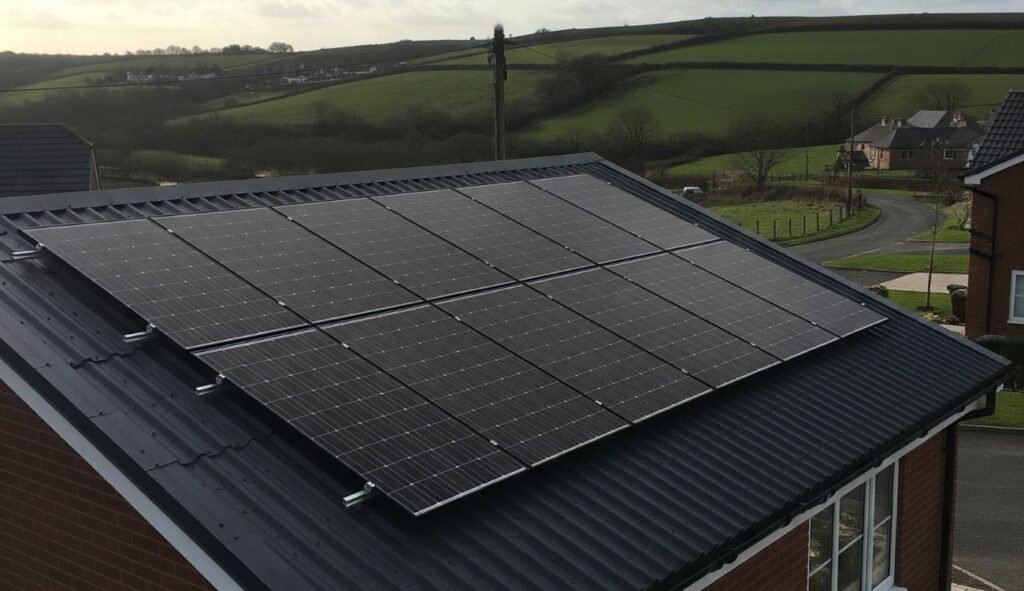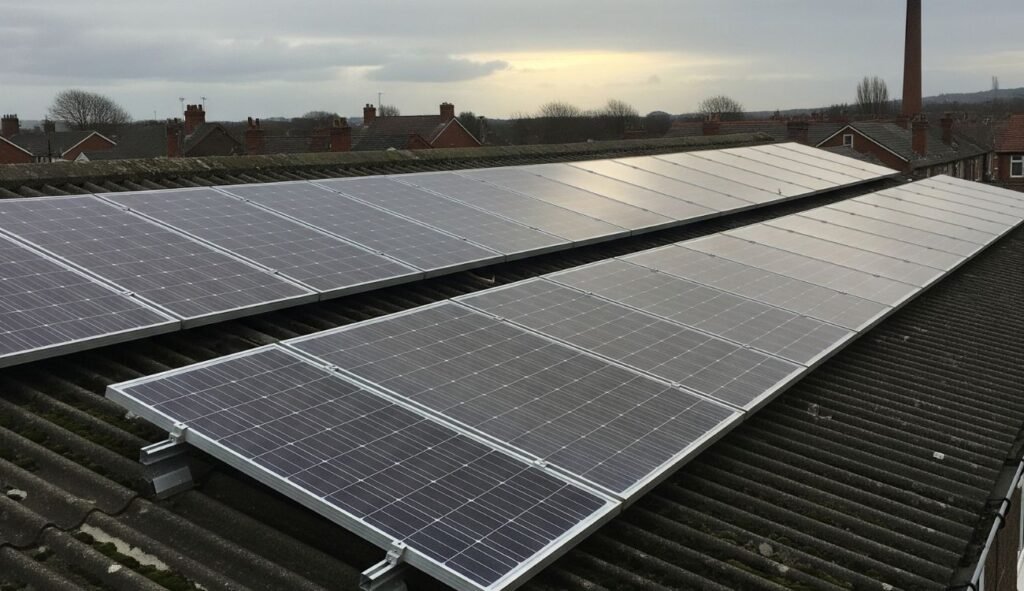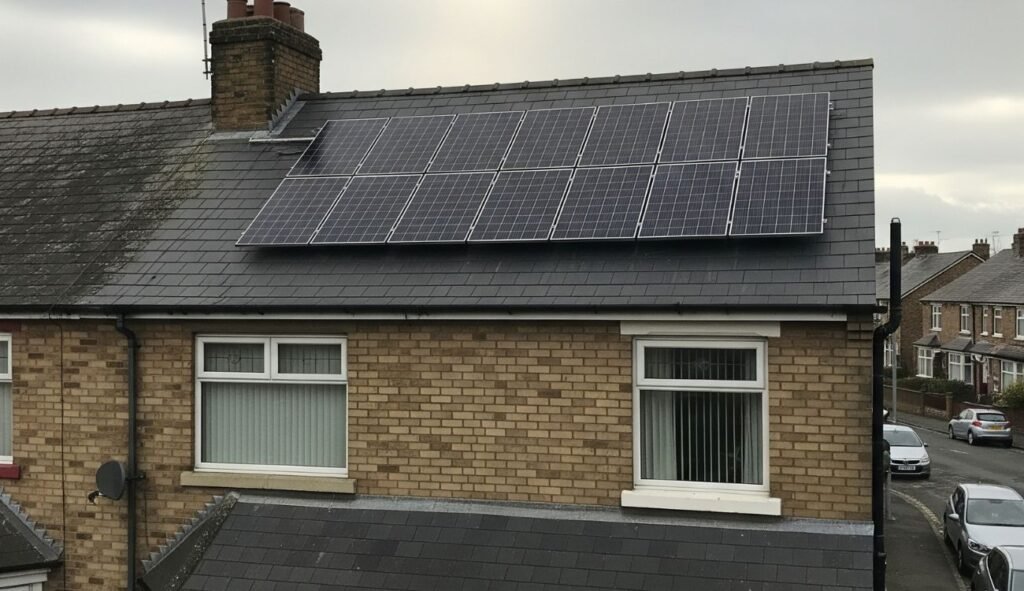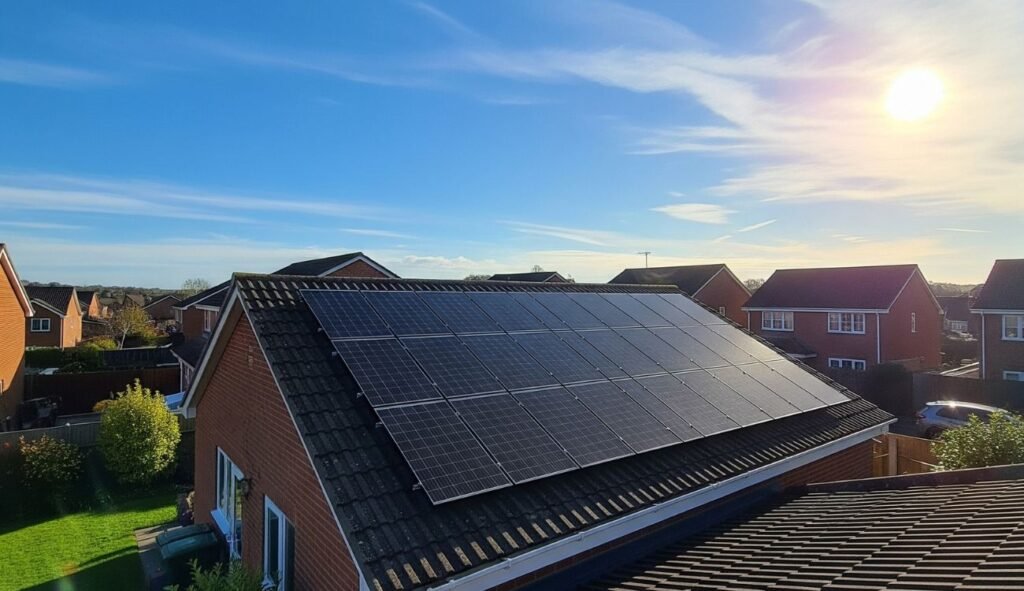If you’re a homeowner, landlord, or business owner wondering, “Can I add additional solar panels to my system?” you’re not alone.
As energy costs rise and sustainability becomes a priority, many people are looking to expand their solar photovoltaic (PV) systems to meet growing energy demands.
Expanding your solar setup can reduce reliance on the grid, lower electricity bills, and even generate income through schemes like the Smart Export Guarantee (SEG).
This comprehensive guide explores the feasibility, considerations, and benefits of adding more solar panels, tailored for UK residents, with expert advice to help you make an informed decision.
Can You Expand Your Solar PV System?
Yes. Adding extra solar panels to an existing system is not only possible but often a smart choice for UK homeowners and landlords.
According to the Energy Saving Trust, a typical 3.5kWp solar system can cover 30-50% of a household’s electricity needs without a battery, and up to 80% with one.
Expanding your system can further boost these figures, especially if your energy consumption has increased due to new appliances, electric vehicles, or a growing family. However, several factors must be considered to ensure compatibility and efficiency.
Why Would You Want to Add More Solar Panels?
There are several reasons you might consider expanding your solar array:
- Increased Energy Needs: New household additions, like electric vehicle charging or home extensions, can increase electricity consumption.
- Maximising Savings: Additional panels can generate more electricity, reducing your reliance on the grid, especially with rising energy prices. In 2024, the average UK electricity price was 24.5p per kWh, according to Ofgem.
- Smart Export Guarantee (SEG): You can earn money by exporting surplus energy to the grid, with SEG tariffs varying by supplier but often ranging from 2-15p per kWh, as noted by Solar Energy UK.
- Environmental Impact: Expanding your system reduces your carbon footprint, aligning with the UK’s net-zero goals by 2050, as outlined by the UK Government.
- Future-Proofing: Preparing for increased energy demands, such as electric heating systems or smart home technologies, ensures long-term energy independence.
For those in the North East, Future Heat can assess your current setup and provide tailored solutions to expand your system efficiently. Request a free quote today to explore your options.
What Are the Technical Requirements for Adding Solar Panels?
Expanding your solar system involves more than just bolting on extra panels. Technical compatibility and regulatory compliance are crucial for a seamless upgrade.
Are Your Existing Panels Compatible with New Ones?
For optimal performance, new panels should match the electrical characteristics (voltage, current, wattage) of your existing ones. Using the same brand and model is ideal, but if unavailable, panels with similar specifications can work. Key considerations include:
- Panel Efficiency: Modern panels (e.g., monocrystalline) are more efficient (18-22%) than older polycrystalline models (15-17%).
- Wiring Configuration: Panels must be wired in a compatible series or parallel configuration to avoid power mismatches.
- Aging Effects: Older panels may produce less power due to degradation (0.5-1% annually), which could affect system balance.
Do You Have Enough Roof Space?
Roof space is a limiting factor for many UK homes. The Energy Saving Trust notes that a 3.5kWp system requires 10-20m² of roof space, depending on panel size and efficiency. For additional panels, consider:
- Available Area: Ensure there’s enough unshaded, south-facing (or east/west-facing) roof space. North-facing roofs are less efficient, producing 15-20% less energy.
- Structural Integrity: A structural engineer may need to assess if your roof can support extra weight (typically 15-20kg per panel).
- Optimisers: If shading is an issue, solar optimisers can minimise performance losses, as recommended by the Energy Saving Trust.
Future Heat’s experts in Newcastle can evaluate your roof’s suitability and optimise panel placement for maximum output.
Is Your Current Inverter Compatible with Additional Panels?
The inverter is a critical component of your solar PV system, converting DC power from panels into usable AC power. Before adding panels, you need to check if your inverter can handle the increased capacity.
Inverters are typically sized at 80-120% of the system’s maximum load. If your inverter is undersized, you may need to upgrade or add a second inverter. Here’s what to consider:
- Inverter Capacity: Check the inverter’s maximum power rating (measured in kW). For example, a 3.6kW inverter may not support a system exceeding 4.3kWp.
- Microinverters vs. String Inverters: Microinverters, attached to individual panels, offer flexibility for expansion, while string inverters may require replacement for larger systems.
- Age of Inverter: Older inverters (10+ years) may not be compatible with modern panels due to technological advancements.
What Regulatory Approvals Are Needed?
In the UK, expanding your solar system may require regulatory approvals:
- Distribution Network Operator (DNO) Approval: Systems generating over 3.68kW require a G99 application to the DNO. This ensures the grid can handle additional power.
- Microgeneration Certification Scheme (MCS): To qualify for SEG payments, your system must be MCS-certified, per Ofgem. This requires installation by an accredited installer like Future Heat.
- Planning Permission: Solar panels are usually considered “permitted development,” but listed buildings or conservation areas may need approval from your local council, as noted by the UK Government.
How Much Does It Cost to Add Solar Panels to An Existing System?
The cost of expanding your solar system depends on several factors, including the number of panels, inverter upgrades, and labour. Below is a breakdown of typical costs in the UK, based on 2025 data:
| Component | Estimated Cost |
|---|---|
| Additional Panels (per panel) | £200-£300 |
| Inverter Upgrade | £500-£2,000 |
| Installation Labour | £1,000-£2,500 |
| Battery Storage (optional) | £4,000-£7,000 |
| Total (4 additional panels, no battery) | £2,000-£4,500 |
How Can You Maximise Return on Investment (ROI)?
Adding panels can yield significant savings and income:
- Energy Bill Savings: A 1kWp addition could save £150-£200 annually, based on 24.5p/kWh electricity prices, according to Ofgem.
- SEG Payments: Exporting 1,000kWh annually at 10p/kWh could earn £100/year, per Solar Energy UK.
- Payback Period: With SEG and savings, payback typically occurs within 7-10 years, depending on system size and usage.
What Are the Benefits of Expanding Your Solar System?
Expanding your solar system offers multiple advantages for homeowners, landlords, and commercial property owners in the North East:
- Increased Energy Independence: Reduce reliance on the grid, especially during peak price periods.
- Enhanced Property Value: Solar panels can increase property value by 4-14%.
- Sustainability: Contribute to the UK’s 2035 clean power target, as set by Great British Energy.
- Local Incentives: North East councils may offer funding under the Energy Company Obligation (ECO) scheme, per the Energy Saving Trust.
How Long Does It Take to Add Additional Solar Panels?
On average, adding extra solar panels to an existing system takes 1 to 2 days, but the full process from planning to activation can take anywhere from 2 to 12 weeks, particularly when DNO approval is required. Understanding this timeline is crucial for homeowners and landlords planning their solar investment and aiming to maximise returns swiftly.
1. Pre-Installation Assessments (1–2 Weeks)
Before any panels can be added, a solar installer will assess your roof space, system compatibility, inverter capacity, and potential shading issues. This may involve:
- A structural inspection to confirm your roof can support additional panels
- Review of your current system layout, including inverter specs and panel efficiency
- Evaluation of your electricity usage trends and export potential
According to the Energy Saving Trust, a 3.5kWp system covers around 30–50% of a household’s annual electricity demand. If your consumption has grown due to electric vehicle charging, home offices, or heat pumps, expansion can help restore balance.
2. Regulatory Approval Timelines (Up to 12 Weeks)
The biggest delay in the solar expansion timeline often comes from grid connection approval, which is legally required for systems over 3.68kW (single-phase) or 11.04kW (three-phase).
This process is governed by your local Distribution Network Operator (DNO) and involves:
- Submitting a G99 application
- Waiting for engineering checks and grid impact assessments
- Receiving written approval to proceed
According to Ofgem, the DNO response time can take anywhere from 6 to 12 weeks, depending on grid constraints in your region.
If your system remains under 3.68kW, you may only need to submit a G98 notification, which can be processed after installation making the process faster.
3. Panel Delivery & Scheduling (1–2 Weeks)
Once approvals are in place, your installer will source the panels, schedule the work, and coordinate with electricians. Delays may occur if:
- You request matching panels that are discontinued or backordered
- There’s bad weather (especially in the UK winter months)
- The installation team is dealing with a backlog during high-demand seasons
4. Installation and Commissioning (1–2 Days)
The physical installation usually takes 1 to 2 working days for 4–6 panels. The process includes:
- Mounting the panels
- Adjusting or upgrading the inverter (if needed)
- Connecting to your current system
- Running safety checks
- Commissioning the system and submitting final paperwork
Installers accredited by the Microgeneration Certification Scheme (MCS) ensure the system is compliant and eligible for Smart Export Guarantee (SEG) payments.
According to Ofgem, only MCS-certified systems qualify for SEG, which allows you to earn from excess solar electricity exported to the grid.
5. Final Notifications & SEG Registration (1–3 Weeks)
Once installed, your installer will submit an MCS certificate and notify your DNO (if applicable). You can then apply for a SEG tariff through your chosen energy supplier.
SEG activation typically takes 1 to 3 weeks, depending on supplier response times and whether a smart meter upgrade is needed.
Expert Tip: Start Early to Align with UK Weather Patterns
Since solar output is highest between April and September, it’s strategic to begin the expansion process in late winter or early spring. That way, your upgraded system is ready to capitalise on longer daylight hours, increasing your return on investment sooner.
Adding solar panels is not just a financial decision; it’s a long-term energy strategy. With timelines ranging from 2 to 12 weeks, early planning and professional guidance are key to avoiding delays.
How Can Future Heat Help You Expand Your Solar System?
For residents of Tyne and Wear, Newcastle, and the North East, Future Heat provides expert solar panel installation and expansion services. Their MCS-accredited team ensures compliance with regulations, maximises system efficiency, and offers tailored advice. Benefits of choosing Future Heat include:
- Free, no-obligation quotes.
- Comprehensive system assessments, including inverter and roof compatibility.
- High-quality, MCS-certified installations eligible for SEG payments.
- Local expertise in the North East’s unique climate and energy needs.
Request a free quote from Future Heat today to start your solar expansion journey.
Frequently Asked Questions (FAQs)
Can I Add Panels to a Leased Solar System?
If your system is leased, you’ll need permission from the leasing company. Some agreements restrict modifications.
Will Adding Panels Affect My Existing Warranty?
Adding compatible panels typically doesn’t void warranties, but using mismatched panels or non-accredited installers may. Always use MCS-accredited installers like Future Heat to ensure warranty compliance.
Can I Add Panels to a Ground-Mounted System?
Yes, ground-mounted systems can be expanded if space and structural supports allow.
Are There Tax Benefits for Expanding My Solar System?
While no direct tax benefits exist for residential solar expansions, commercial properties may claim capital allowances.
Our Verdict
Expanding your solar PV system in the North East of England is a practical way to boost energy savings, reduce your carbon footprint, and future-proof your property against rising energy costs.
By assessing inverter compatibility, roof space, panel specifications, and regulatory requirements, you can make an informed decision that aligns with your energy goals. With Future Heat’s expertise in Tyne and Wear, Newcastle, and the wider North East, you can trust a seamless, MCS-certified expansion process that maximises ROI and sustainability.
Myles Robinson is a seasoned expert in the boiler and home improvement industry, with over a decade of experience. He is deeply committed to environmental sustainability, actively promoting energy-efficient heating solutions to help households reduce their carbon footprint. By combining industry expertise with a dedication to environmental responsibility, Myles continues to lead efforts in transforming home heating practices towards a more sustainable future.

